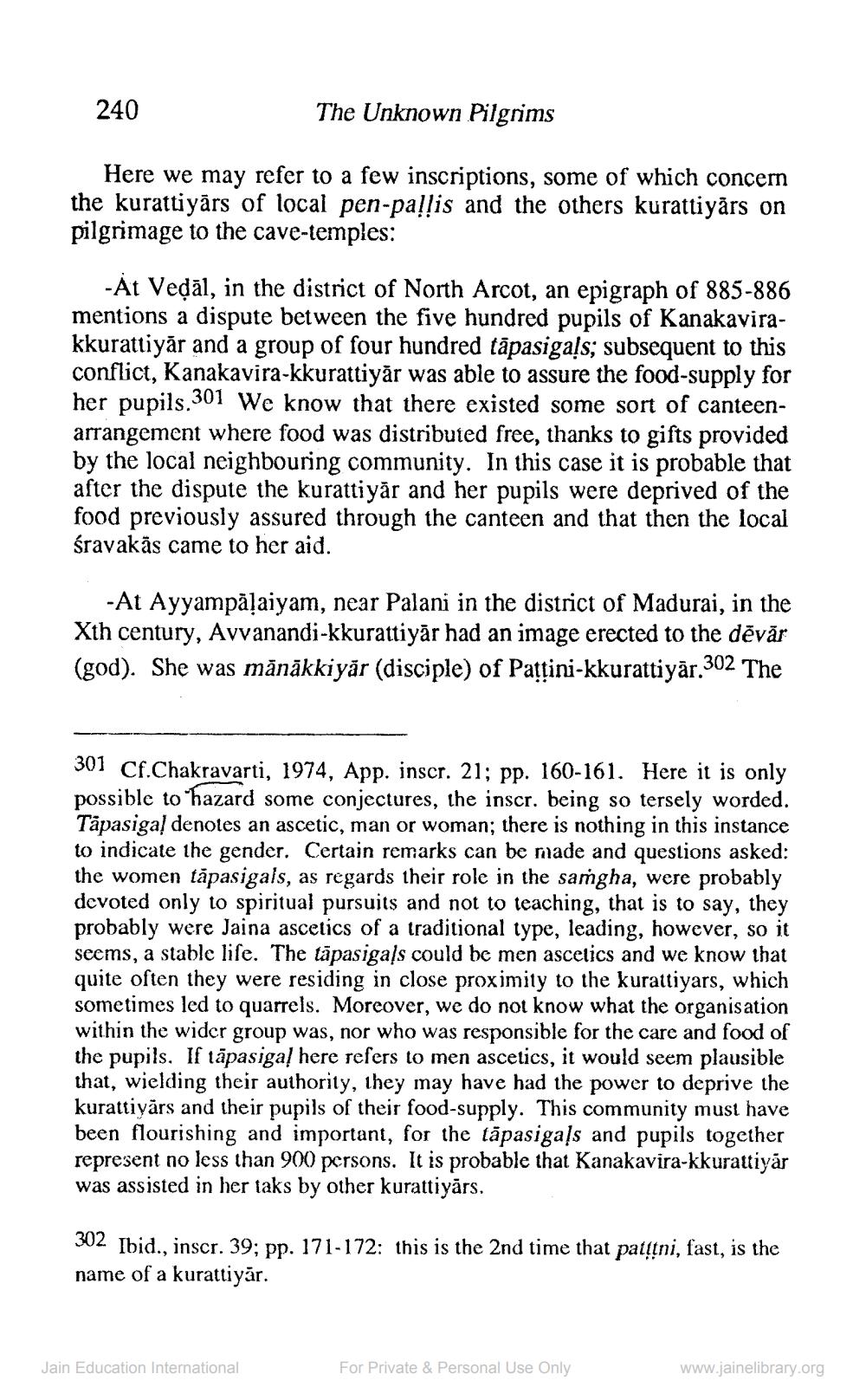________________
240
The Unknown Pilgrims
Here we may refer to a few inscriptions, some of which concern the kurattiyārs of local pen-pallis and the others kurattiyārs on pilgrimage to the cave-temples:
-At Vedāl, in the district of North Arcot, an epigraph of 885-886 mentions a dispute between the five hundred pupils of Kanakavirakkurattiyār and a group of four hundred tāpasigaļs; subsequent to this conflict, Kanakavira-kkurattiyār was able to assure the food-supply for her pupils.301 We know that there existed some sort of canteenarrangement where food was distributed free, thanks to gifts provided by the local neighbouring community. In this case it is probable that after the dispute the kurattiyār and her pupils were deprived of the food previously assured through the canteen and that then the local śravakās came to her aid.
-At Ayyampāļaiyam, near Palani in the district of Madurai, in the Xth century, Avvanandi-kkurattiyār had an image erected to the dēvār (god). She was mānākkiyar (disciple) of Pattini-kkurattiyār.302 The
301 Cf.Chakravarti, 1974, App. inscr. 21; pp. 160-161. Here it is only possible to hazard some conjectures, the inscr. being so tersely worded. Tāpasiga! denotes an ascetic, man or woman; there is nothing in this instance to indicate the gender. Certain remarks can be made and questions asked: the women tapasigals, as regards their role in the samgha, were probably devoted only to spiritual pursuits and not to teaching, that is to say, they probably were Jaina ascetics of a traditional type, leading, however, so it seems, a stable life. The tāpasigaļs could be men ascetics and we know that quite often they were residing in close proximity to the kurattiyars, which sometimes led to quarrels. Moreover, we do not know what the organisation within the wider group was, nor who was responsible for the care and food of the pupils. If tāpasiga/ here refers to men ascetics, it would seem plausible that, wielding their authority, they may have had the power to deprive the kurattiyārs and their pupils of their food-supply. This community must have been flourishing and important, for the tāpasigaļs and pupils together represent no less than 900 persons. It is probable that Kanakavira-kkurattiyar was assisted in her taks by other kurattiyārs.
302 Ibid., inscr. 39; pp. 171-172: this is the 2nd time that paitļni, fast, is the name of a kurattiyār.
Jain Education International
For Private & Personal Use Only
www.jainelibrary.org




